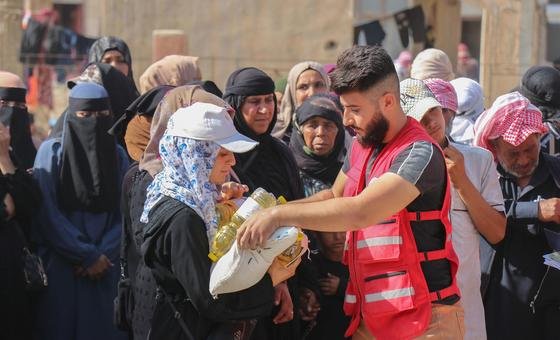According to reports by the Food and Agriculture Organization (FAO), the World Food Program (WFP) and the Lebanese Ministry of Agriculture, the violent conflict has had a major impact on agriculture and the economy, which will slow recovery from ongoing challenges.
1.65 million people in Lebanon face crisis or emergency levels of hunger. By the beginning of 2024, an additional four million people will be added to the population figures suffering from food insecurity.
Of these, more than two lakh are living in emergency situations. The number of infected has doubled in the last few months.
A cease-fire agreement was signed between Israel and Hezbollah in November 2024, which remains in force despite the fragile situation. Israeli troops and armed groups have withdrawn from southern Lebanon, and Lebanese security forces, along with UN peacekeepers, are trying to maintain peace.
Matthew Hollingsworth, WFP representative in Lebanon, said the poor food security situation here is not surprising. “After months of conflict, the 66-day war has destroyed lives and livelihoods.”
refugee population
The burden of food insecurity in Lebanon is felt most heavily by the refugee population. About 40 percent of the country’s Syrian and Palestinian refugees are suffering from crisis-level hunger.
According to a senior WFP official, while some people may return to their homes after the ceasefire, others will face the harsh reality that they have no home to return to.
Lebanon’s economy has shrunk by 34 percent since 2019, and sectors including agriculture, tourism and trade have been badly affected.
Agricultural land and property were damaged during the war, 12 thousand hectares of arable land were burnt, causing a loss of more than a billion dollars to the agricultural sector.
With rising inflation and withdrawal of crop subsidies, household budgets are under pressure and food prices are proving out of reach for many families living in vulnerable conditions.
Rising prices of staple foods are forcing households to choose between not eating enough or preparing less nutritious food.
The most vulnerable at risk
Malnutrition is becoming a major threat, especially for women and children.
A recent survey found that three out of every four children under the age of five are not getting a varied diet. This has affected his growth and he is underweight for his age.
Syrian refugees are disproportionately affected and their population stunting rate is higher than the national average.
Under these circumstances, WFP has provided critical food assistance to 7.5 million people in 2024 and plans to provide assistance to 2.5 million people this year, including 9 million Syrian refugees.
However, humanitarian relief efforts in areas affected by violent conflict are being hampered by shortages of relief funds and operational challenges.
The situation in 2025
Since the ceasefire was announced in November 2024, uncertainty remains over the restoration process.
Food insecurity in Lebanon is likely to continue for the next three months and the situation is unlikely to improve in the short term, according to a report published on Wednesday.
WFP representative Matthew Hollingsworth said his organization’s mission in this critical moment is clear: to help governments and civilians rebuild lives and food systems.

